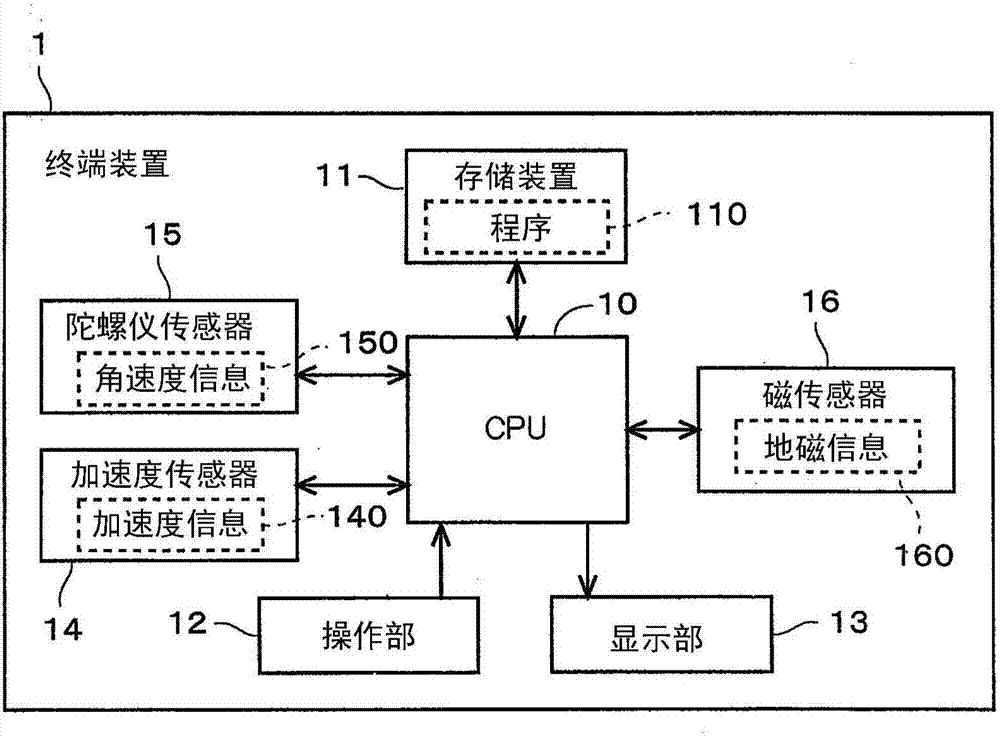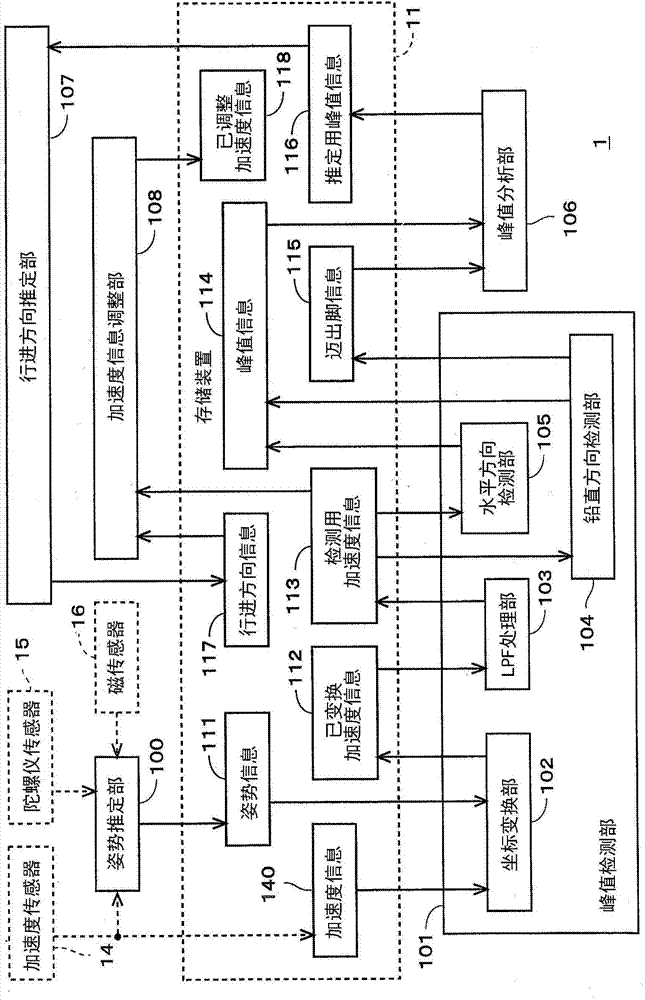Pedestrian observation system, recording medium, and estimation of direction of travel
A technology of observation system and direction of travel, applied in the directions of measuring device, measuring distance, surveying and navigation, etc., can solve the problems of large amount of calculation, difficult to define, poor noise resistance, etc., and achieves high accuracy, suppresses the amount of calculation, and has good responsiveness. Effect
- Summary
- Abstract
- Description
- Claims
- Application Information
AI Technical Summary
Problems solved by technology
Method used
Image
Examples
no. 1 approach >
[0083] figure 1 It is a figure which shows the terminal device 1 of 1st Embodiment. figure 1 The shown ENU (East-North-Up: standing) coordinate system is a coordinate system independent of the terminal device 1, and is "a coordinate system independent of the motion of a pedestrian". In the ENU coordinate system, the eastward axis is defined as an E axis, the northward axis is defined as an N axis, and the vertically upward axis is defined as a U axis. in addition, figure 1 The shown XYZ coordinate system is a coordinate system defined on the terminal device 1 (terminal coordinate system), and in this embodiment, its origin is defined near the center of the screen of the display unit 13 . Among them, in this embodiment, the traveling direction and distance are calculated based on the relative positional relationship, so figure 1 The position of the origin shown is defined for convenience, and may also be defined at other positions.
[0084] exist figure 1 Among them, the X...
no. 2 approach >
[0222] In the first embodiment, the case where the terminal device 1 is not fixed to a pedestrian has been described. In this case, not only the acceleration sensor 14 but also the gyro sensor 15 and the magnetic sensor 16 need to be used to estimate the posture of the terminal device 1 . However, in the case of using an application such as PDR, it is conceivable that a terminal device for observing the walking behavior of the pedestrian is fixed to the body of the pedestrian. For example, attach the terminal to the waist of a walker, or put it in a breast pocket. If limited to such a usage form, the traveling direction can be estimated more easily than in the first embodiment.
[0223] Figure 11 It is a figure which shows the terminal device 2 of 2nd Embodiment. suppose Figure 11 The illustrated terminal device 2 measures the direction of travel while being put in the breast pocket of the walker. In addition, the terminal device 2 constitutes the pedestrian observation...
no. 3 approach >
[0234] In the second embodiment, an example in which the terminal device 2 (acceleration sensor 14 ) is substantially fixed to the body of a pedestrian has been described. However, under the situation of utilizing the PDR, the situation that the walker swings the arm back and forth while holding the portable device on the arm of the self occurs more frequently (hereinafter referred to as "arm swing state"). ). In addition, the "arm" mentioned here includes "hand", "finger" and the like. That is, "holding on the arm" includes a state of being held by the "hand", a state of being worn on the "finger" such as a ring-type device, and a state of being worn on the "wrist" with a strap or the like such as a watch-type device. state, or the state of being worn on the "forearm" in the form of a bracelet, etc.
[0235] Figure 12 It is a diagram showing functional blocks included in the terminal device 3 according to the third embodiment together with data transfer. In the following...
PUM
 Login to View More
Login to View More Abstract
Description
Claims
Application Information
 Login to View More
Login to View More - R&D
- Intellectual Property
- Life Sciences
- Materials
- Tech Scout
- Unparalleled Data Quality
- Higher Quality Content
- 60% Fewer Hallucinations
Browse by: Latest US Patents, China's latest patents, Technical Efficacy Thesaurus, Application Domain, Technology Topic, Popular Technical Reports.
© 2025 PatSnap. All rights reserved.Legal|Privacy policy|Modern Slavery Act Transparency Statement|Sitemap|About US| Contact US: help@patsnap.com



